The practice of deadheading, or removing flowers from a plant as they fade to promote even more flower production, will give you more blooms than you thought possible! This simple technique can be applied to both annuals and perennials to give you a longer blooming season. Read on to learn how and why to deadhead, when to do it, and when to skip it.
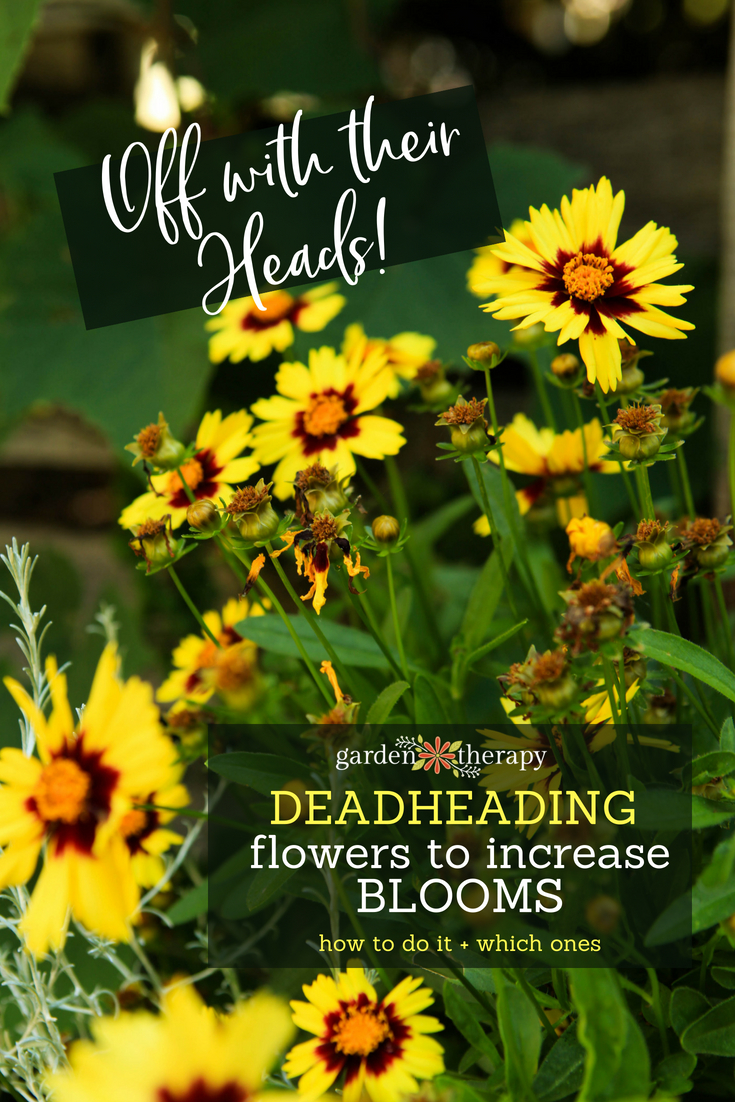
Why Deadhead?
Want more flowers? Deadheading, or pinching off the spent flowers from a plant can encourage more blooms to form, giving you a much more impressive display that lasts for longer than if you allow the flowers to stay on the plant. Plants have one main focus: to reproduce. So if a flower blooms and produces seed, the plant’s job is done. Well done, plant! However, if some sly gardener pinches off the flowers before going to seed, the plant gears up to make more blooms in order to reproduce. And the sly gardener gets flowers flowers FLOWERS!
Can you tell I highly recommend deadheading in the home garden?
Not all flowers will rebloom after deadheading, though, it will help the plant look neater as the flowers fade. And there are some plants that I absolutely don’t deadhead because I grow them FOR the seed heads! Poppy, Allium, Crocosmia, Eryngium, Echinops, Luneria, Nigella, daylilies, irises, and roses (for rose hips) provide a bounty of decorative materials for crafting with throughout the year. Let these beauties go to seed.
And some varieties of annuals and perennials do not need deadheading because they are just neat and tidy all on their own. I found a great list of self-cleaning varieties here.
That being said, not deadheading will not cause particular harm to a plant. The plant just won’t have as many flowers for you and the bees to enjoy.
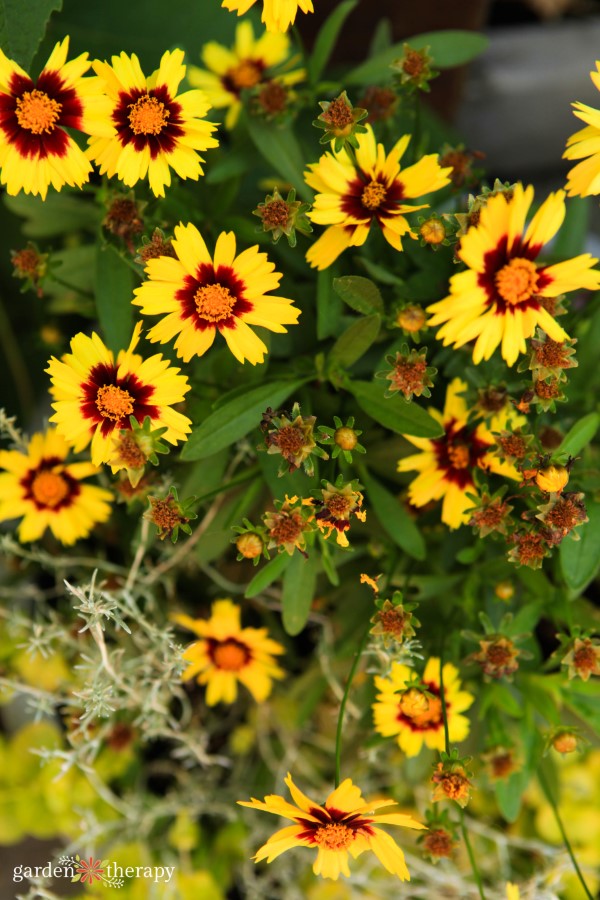
How to Deadhead
Remove the entire flower from the stem just below the bloom and above the uppermost leaves. Either pinch the stem off with your nails or use pruning snips or scissors. It is important that you take off the entire flower and not just the petals because you need to make sure that you are stopping seed production in order to encourage more blooms. Flowers that benefit most from deadheading are multi-branched plants with waves of flowers that bloom over time like the Coreopsis shown here. Other flowers that have responded well to deadheading in my experience are: Aster, Columbine, Dahlia, Delphinium, Dianthus, Geum, Marigold, Monarda, Petunia, Phlox, Hollyhock, Lavender, Lupin, Astriantia, Echinacea, Lychnis, Shasta Daisy, and Helenium.
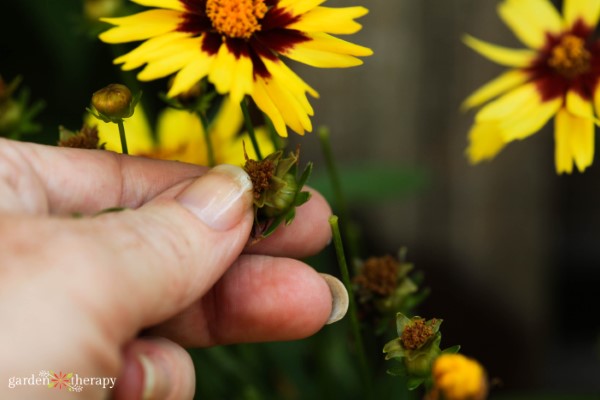
When to Deadhead
When a flower’s petals have wilted, that is the time to deadhead it. The absolute perfect time for deadheading each plant will be different depending on the plant, time of year, and weather. I really don’t need to strive for perfection in my garden, through. I just head out and pop off heads whenever it seems like it is needed. Use your judgement and deadhead any flower when it is past its prime and beginning to look wilted, faded, or wrinkled. In all likelihood you will see the plant put more energy into replacing those blooms. If not, well, you plant does look a whole lot better, doesn’t it?
To stay on top of deadheading, it’s best to take a look at your flowers regularly. Try making a habit of walking through your garden every day and deadhead blooms as you go on your tour. This process can be meditative and is a nice way to force yourself to literally stop and smell the flowers on a regular basis. You will also get a chance to see any food that can be harvested, any pests or diseases, watering needs, and most importantly, the beauty of your outdoor wonderland.
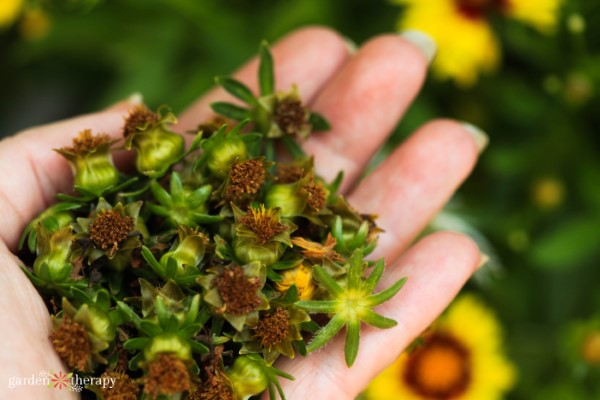
When Not to Deadhead
There are some instances when it is a better idea not to deadhead at all. Certain flower varieties are excellent self-seeders and you may choose to leave the flowers on so that they will drop their seeds for next season’s flowers. Plants that do this include poppies, forget-me-nots, Columbine, foxglove, and Lobelia.
You also might want to refrain from deadheading in the fall as the flowering season reaches its end. Leaving seed heads and pods helps local wildlife find food as it is becoming scarcer with the colder season, plus you may want to collect some seeds for yourself for next year.
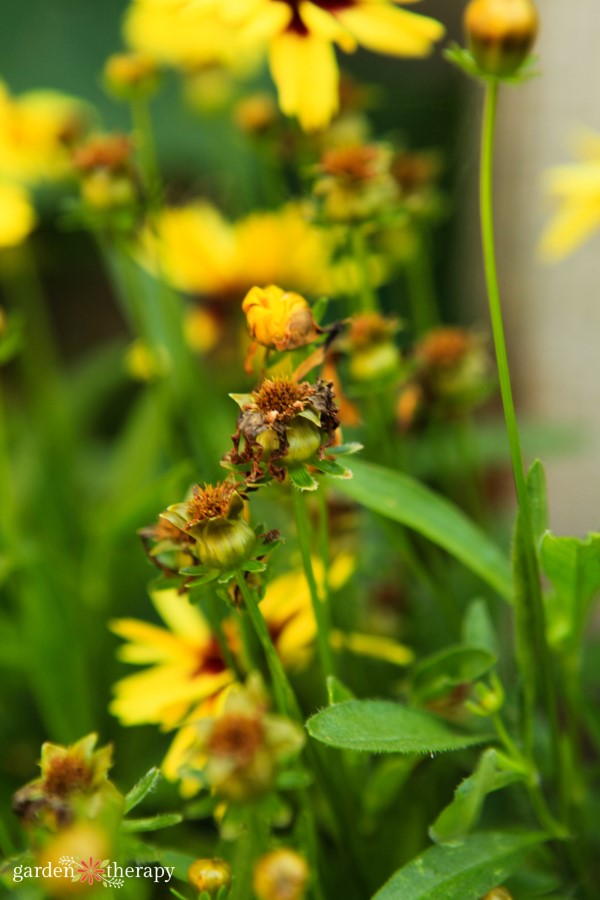
Don’t forget that deadheading doesn’t have to feel like a chore! Use it as a mindfulness tool and think of your deadheading time as a few minutes set aside regularly to really observe and appreciate your garden up close.

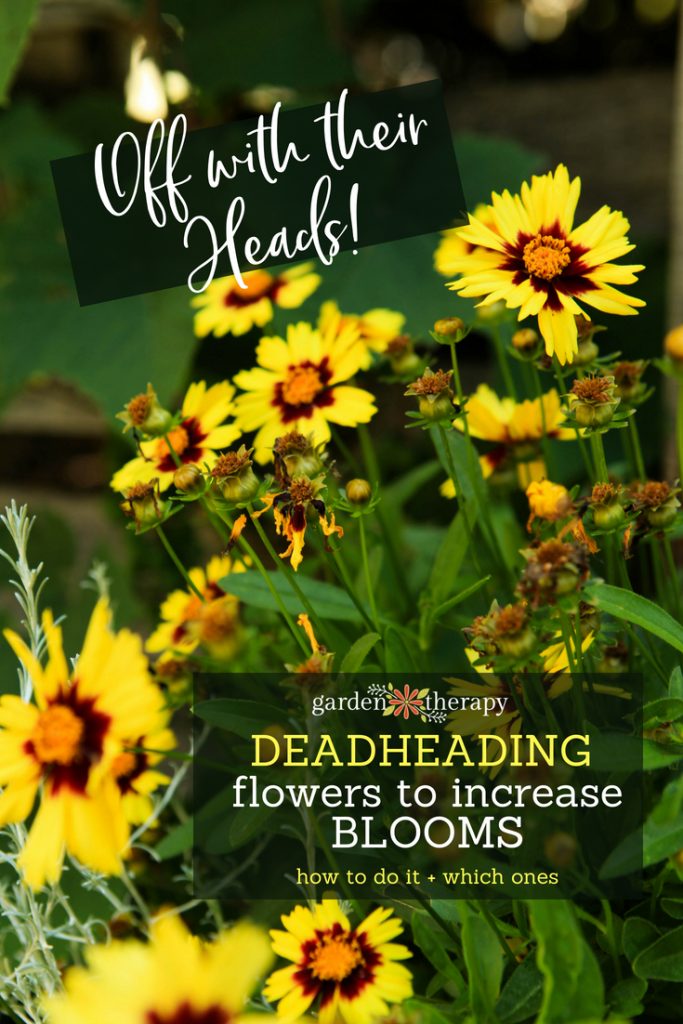



I never know deadheading is very simple. Thanks for sharing this article!